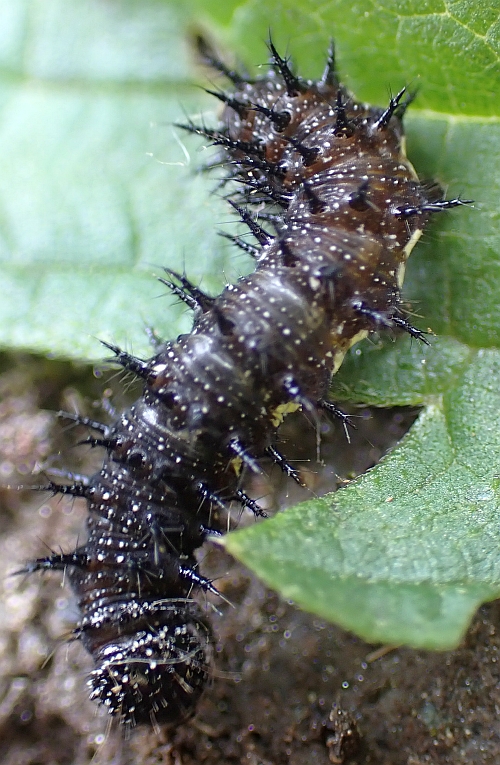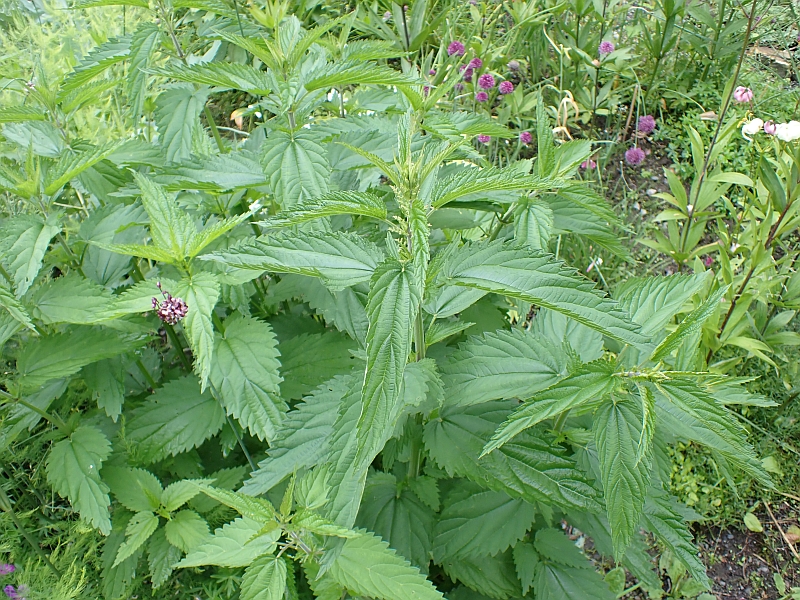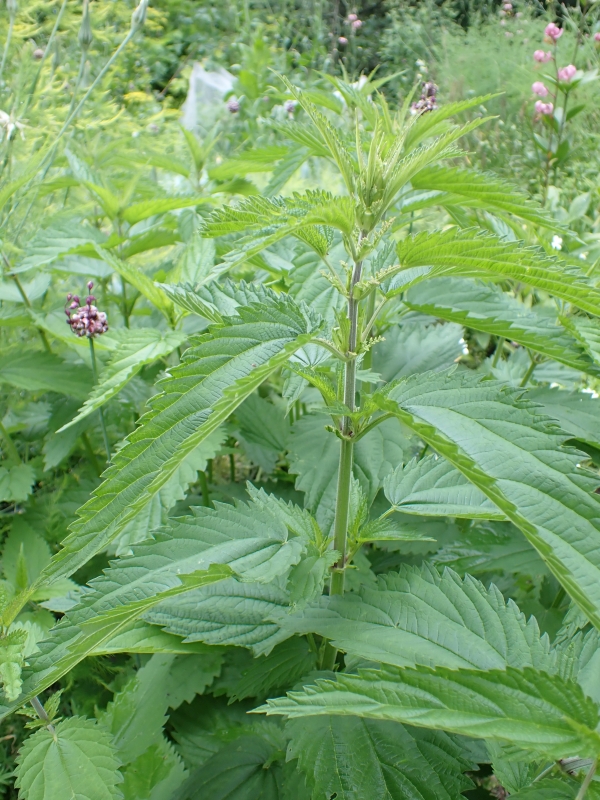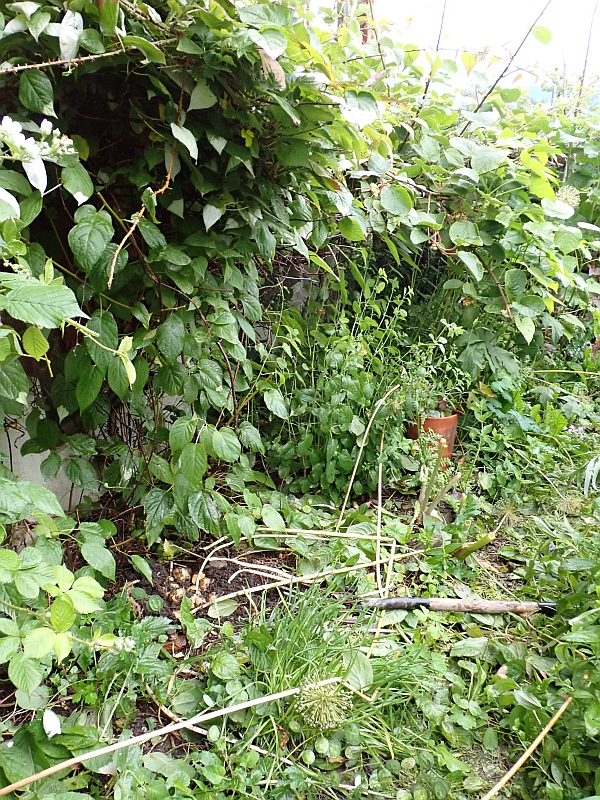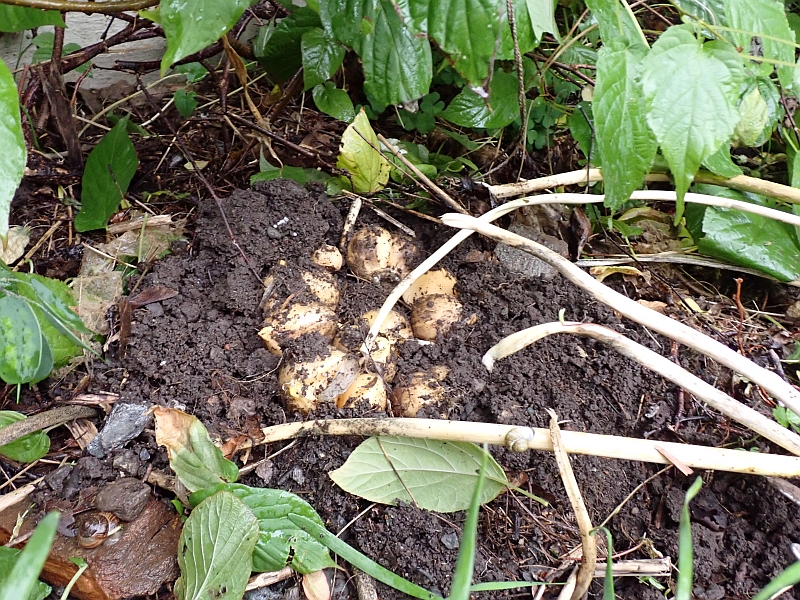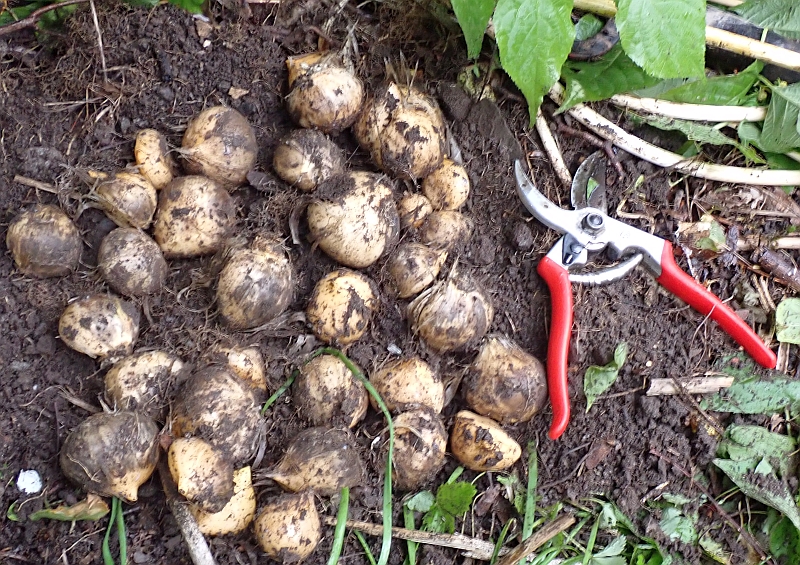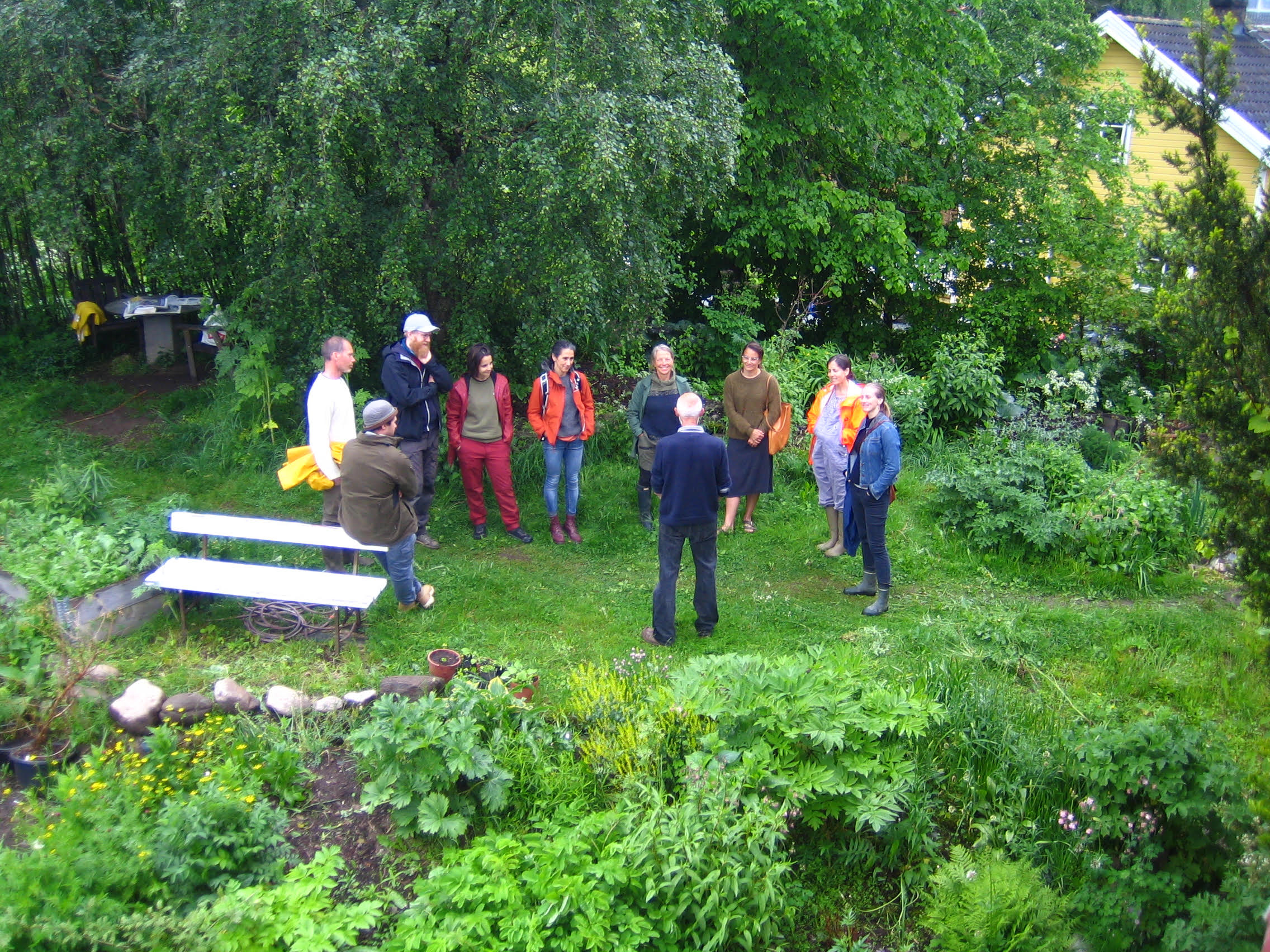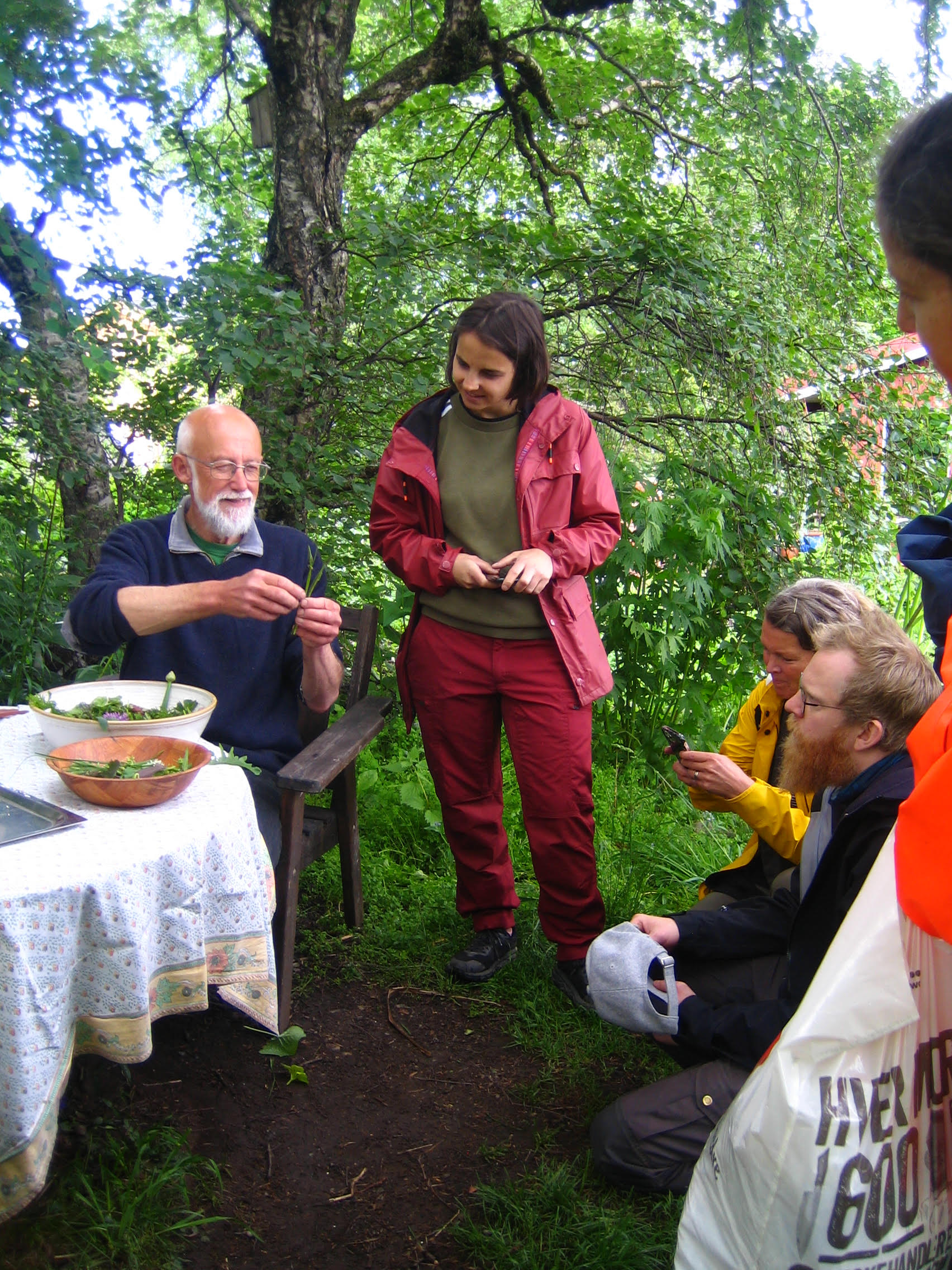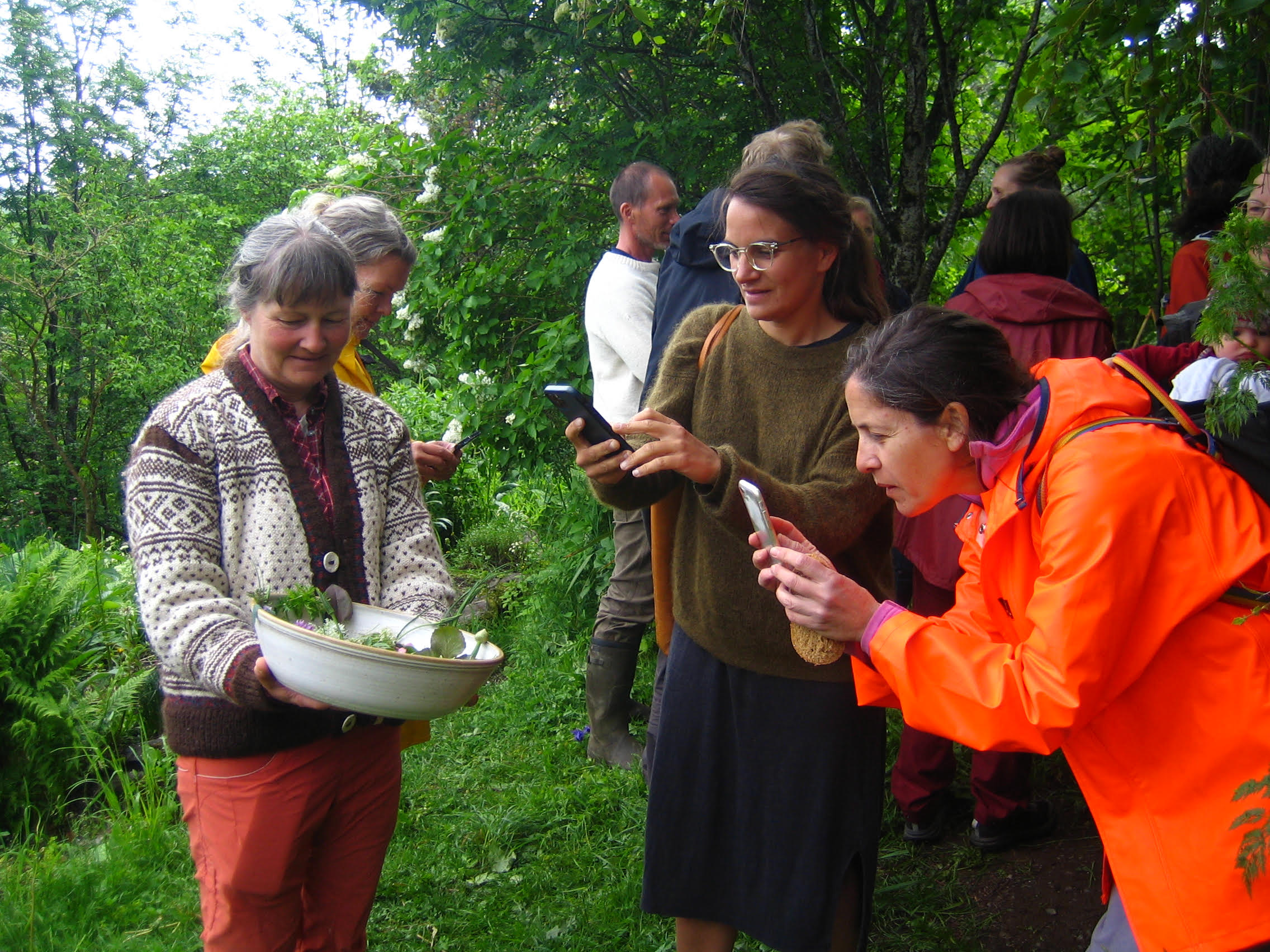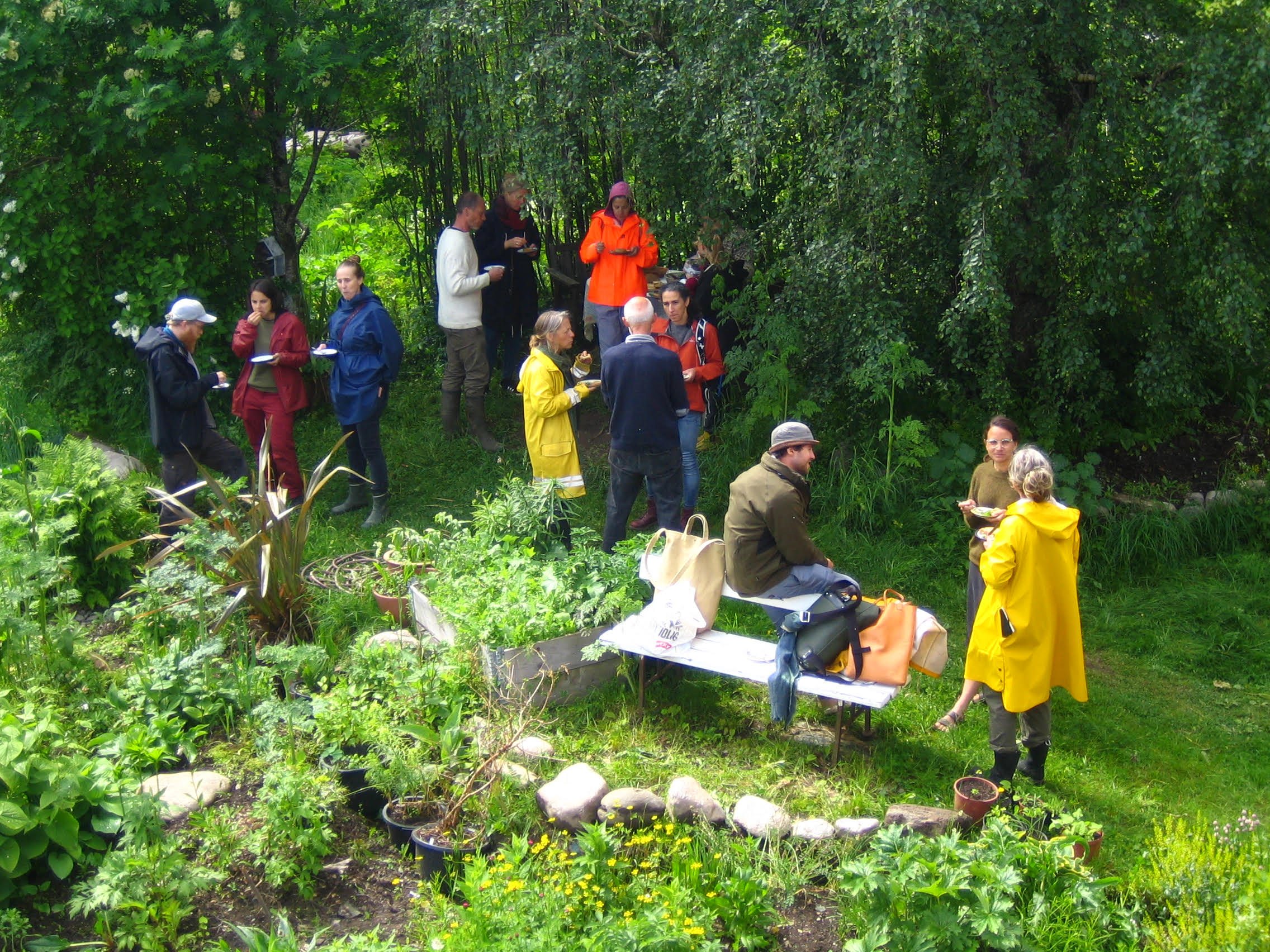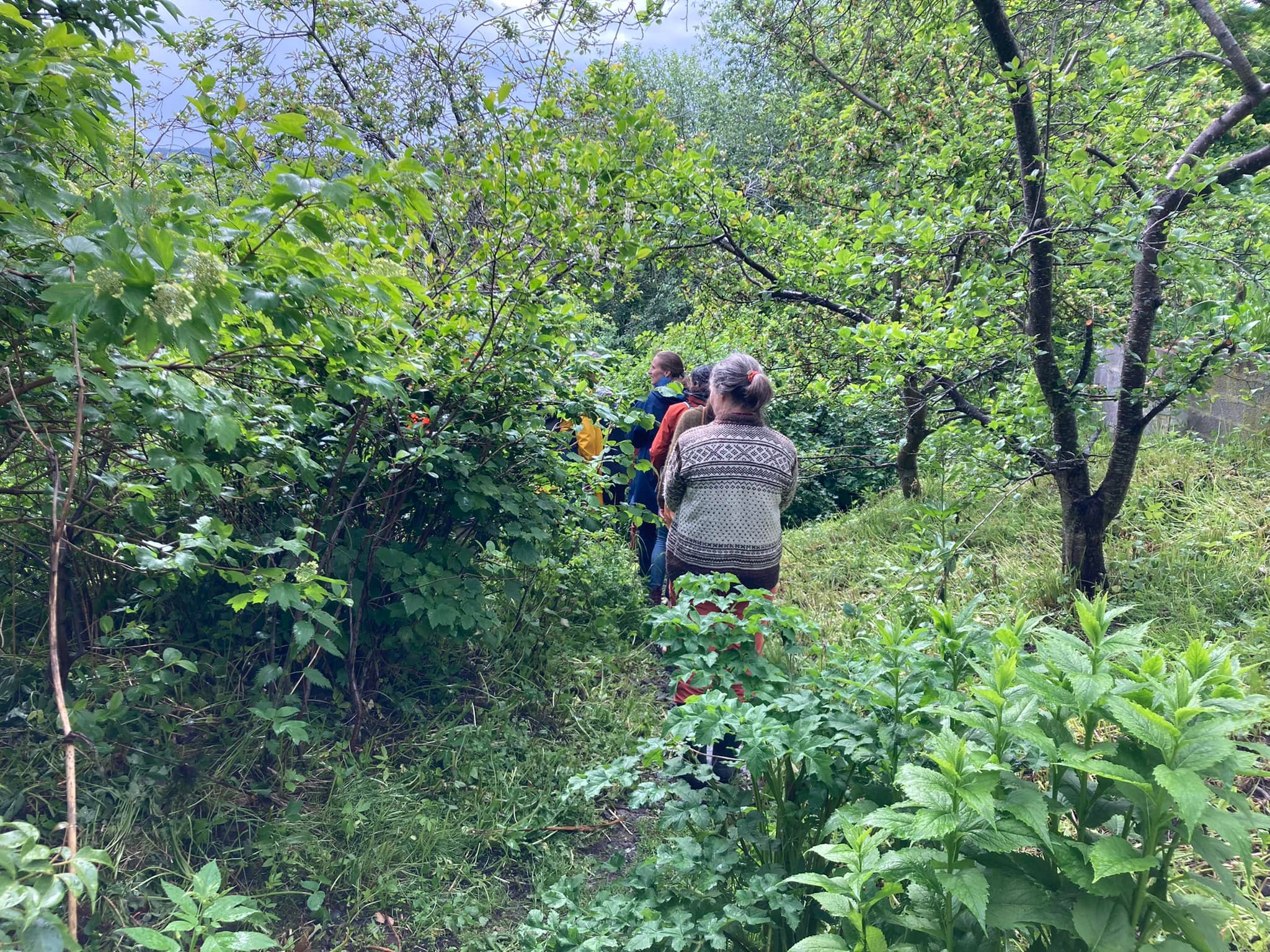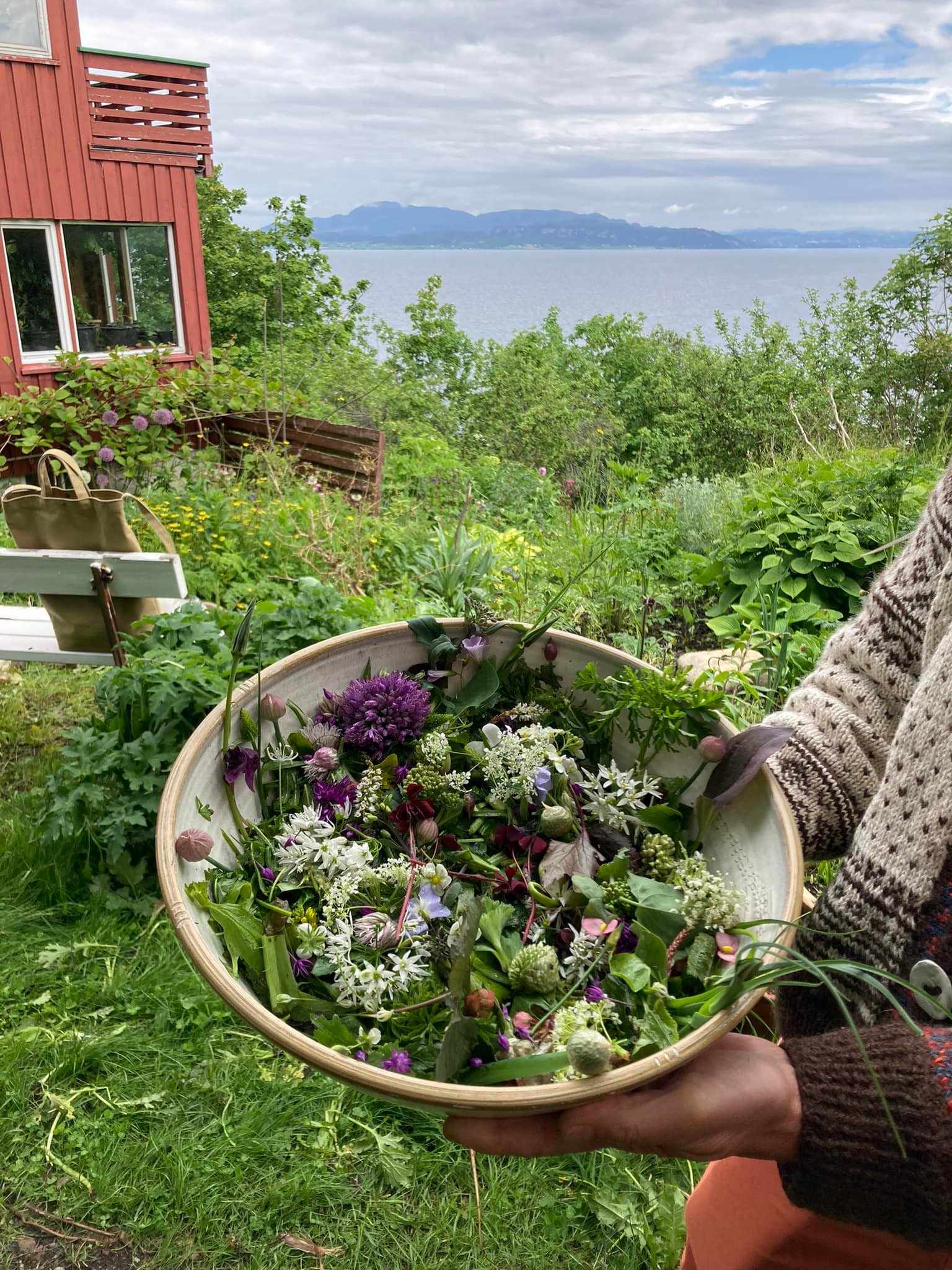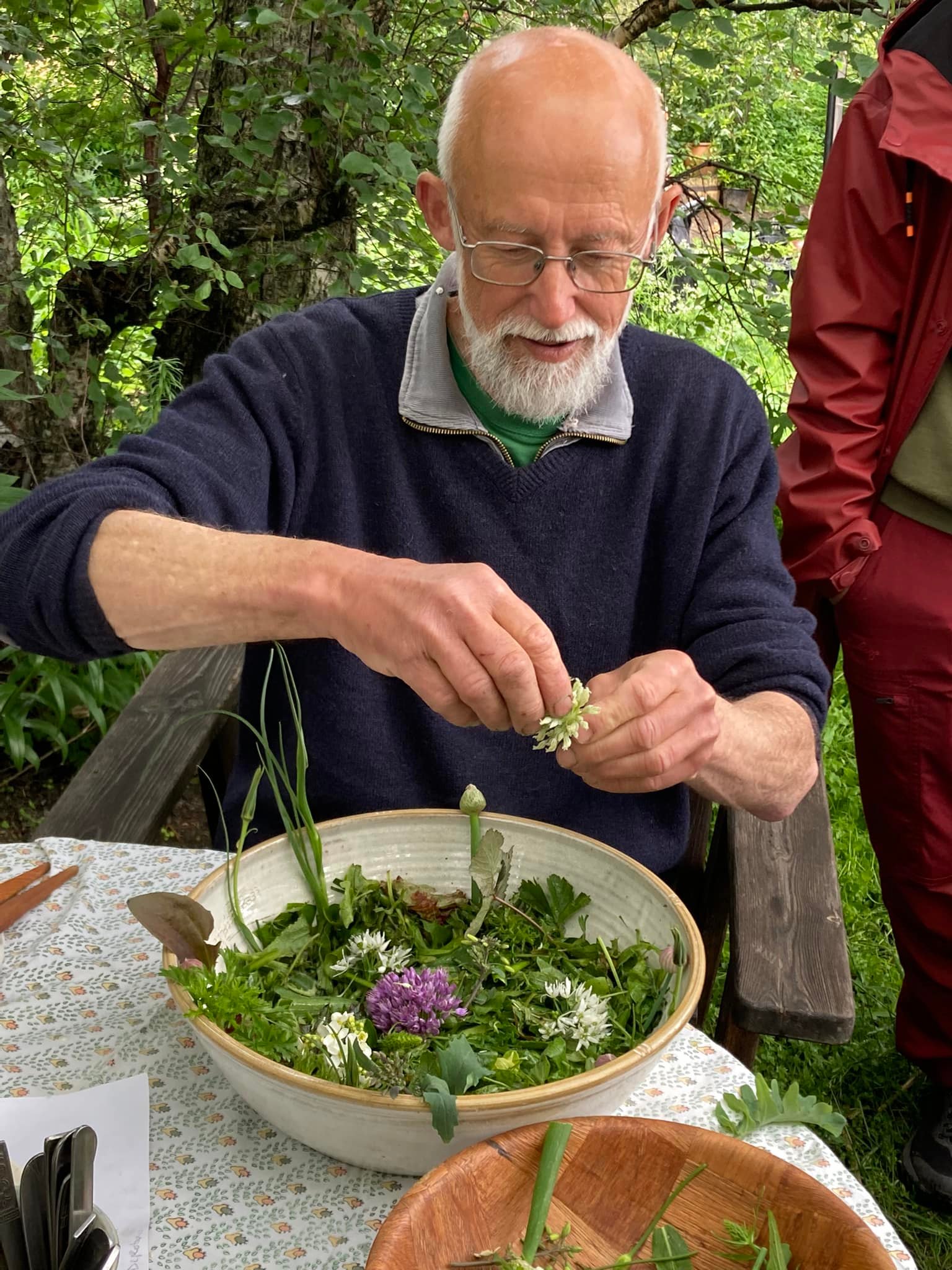I have a small patch of different forms of alpine bistort / harerug (Bistorta vivipara) in the garden and this year’s harvest is now drying in the living room. See other posts on this plant here: https://www.edimentals.com/blog/?s=%22alpine+bistort%22 

Monthly Archives: July 2022
Persian Shallot harvest
One of my favourite perennial onions are persian shallots, Allium stipitatum and I’ve blogged about them several times in the past:
https://www.edimentals.com/blog/?s=persian+shallot
This is one of the earliest onions to appear in the spring and they flower and die down in the course of June. July is the best time to harvest the bulbs (I’ve often harvested them too late when they’ve already started sprouting in autumn). I harvested one plant this week and the bulbs were in perfect condition. I was once again struck by the yield (although it is probably two years since I harvested this plant). I replanted 3 of the largest bulbs. I usually dry the bulbs as they do in Iran, but this time I ate some fresh. They are surprisingly mild tasting and I used them fried in an omelette.
Below the pictures is a Norwegian article on the persian shallot which I wrote in 2021.
Please download this Norwegian article on persian shallots:
The wildest garden
I was away in the UK unexpectedly for two weeks in June. In my absence, there was a mini-heat wave here with plentiful rainfall too and 24 hour light. Growth was phenomenal and I took this series of videos to document the garden at its wildest (I had only cleared the paths of overhanging and fallen plants so that I could walk around the garden).
Salad for HGB and HvB
My dad Harald George Barstow (HGB) sadly passed away on 7th June at 97. A few days later on 11th June I’d scheduled a long-awaited visit from my friend Helene von Bothmer, the Koster Islands Permaculture Queen accompanied by participants on a one day permaculture course on Katy Chada’s farm (I had twice visited Koster but this was Helene’s first Malvik visit). They had asked if I could make a salad for lunch that day, so with my Dad’s loving memory in focus, the salad became a tribute to Dad as well as a welcome to Helene, Katy and the participants. It had exactly 97 ingredients <3 (a list can be found at the bottom of this page)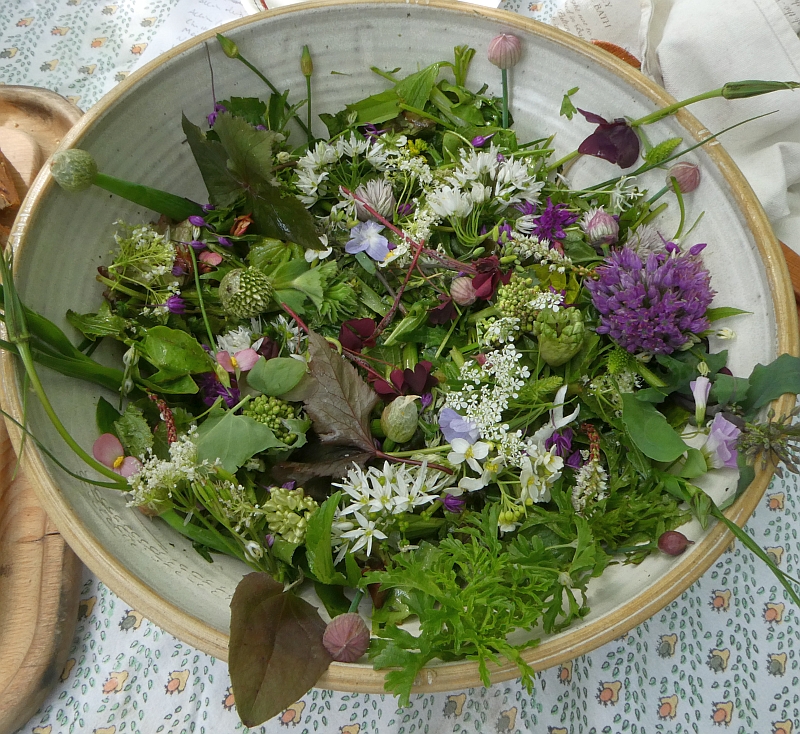
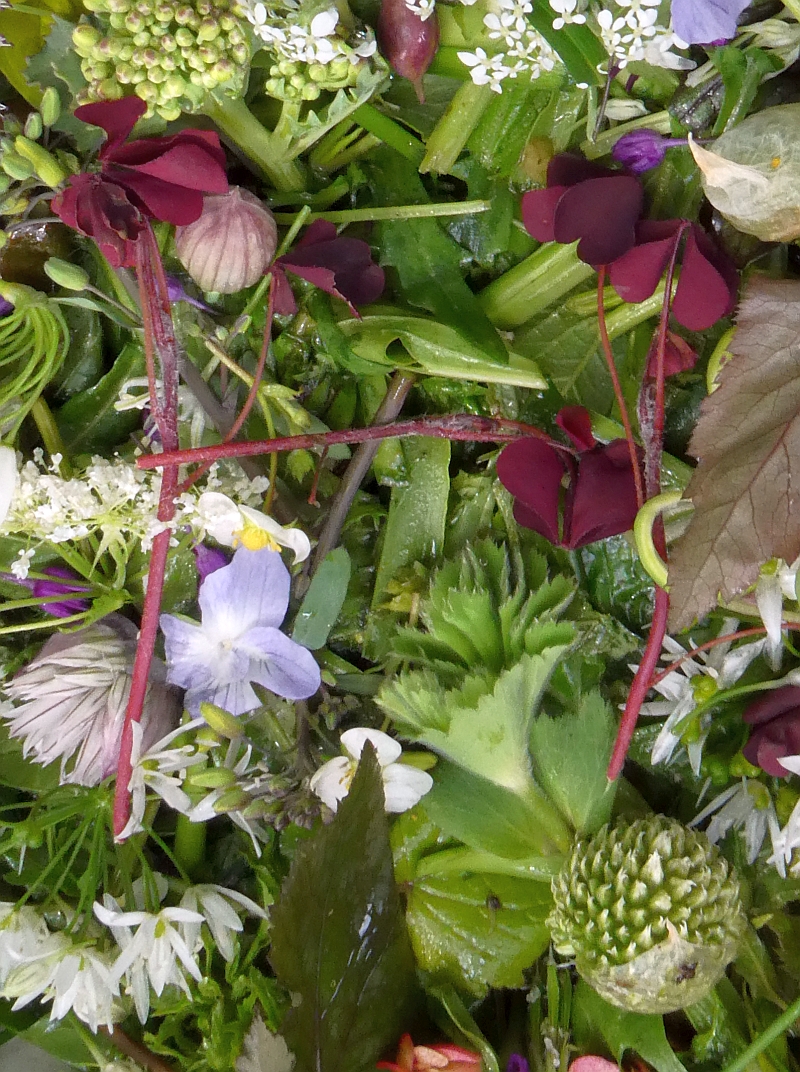 There’s an H in there (sort of!)
There’s an H in there (sort of!)
Now some pictures taken during a lovely visit! I hope it isn’t long before our ways cross again Helene!
…and a few pictures taken by Helene:
THANKS FOR THE MEMORABLE VISIT!
The ingredients:
1-2. Oxalis triangularis
3. Claytonia perfoliata
4. Gynostemma
5. Physalis “Indian Strain” fruits
6. Begonia heracleifolia (flowers)
7. – 11. Lettuce (salat) – 5 varieties
12. Dill
13. Chopsuey greens (kronkrage)
14. – 15. Celery (selleri) – 2 varieties (Green Utah and Red Stem)
16. Allium “Purple Sensation” flowers
17. Allium ursinum (ramsons / ramsløk) flowers
18. Allium stipitatum “Album” flowers
19. Allium victorialis (seiersløk) flower stems
20. – 21. Allium fistulosum (Welsh onion / pipeløk) – 2 varieties
22. Myrrhis odorata (sweet cicely / Spansk kjørvel) flowers
23. Allium karataviense flowers
24. – 25. Polygonum viviparum (alpine bistort / harerug) bulbils (2 varieties – light brown and purple)
26. – 27. Viola cornuta “Alba” (flowers and leaves)
28. – 29. Crambe maritima (broccolis and flowers)
30. Anthriscus sylvestris (cow parsley / hundekjeks)
31. – 40. 10 different Hosta cultivars and species
41. Alliaria petiolata (hedge garlic / løkurt)
42. Sorbus (rowan / rogn) leaves
43. Campanula trachelium (nettle-leaved bellflower / nesleklokke)
44. Allium oleraceum
45. Stellaria media (chickweed / vassarve)
46. Meum athamaticum
47. Nasturtium (blomkarse)
48. Hablitzia tamnoides
49. – 50. Humulus lupulus (hops / humle) – 2 varieties
51. Basil
52. Aster scaber
53. Allium spp.
54. – 55. Lepidium sativum (cress / karse) – leaves and flowers
56. Rosebay willowherb / geitrams
57. Ground elder / skvallerkål
58. Allium macleanii – flowers
59. Lepidium latifolium
60. Origanum “Aureum”
61. Scorzonera hispanica (flower stems and buds)
62. Cichorium intybus (chicory / sikkori)
63. Cryptotaenia japonica “Atropurpurea”
64. Allium nutans x senescens
65. Sonchus oleraceus (sow thistle / haredylle)
66. Oxeye daisy / prestekrage
67. – 68. Rumex scutatus – 2 varieties
69. Tragopogon pratensis (Jack-go-to-bed-by-noon / geitskjegg)
70. – 72. Allium schoenoprasum (chives / gressløk) – 3 varieties including Black Isle Blush
73. Campanula latifolia (giant bellflower / storklokke)
74. Campanula punctata
75. Allium scorodoprasum (sand leek / bendelløk)
76. Rumex crispus (curly dock / krushøymole)
77. Phyteuma nigra (black rampion / svartvadderot)
78. Viola arborescens
79. Allium cernuum (nodding onion / prærieløk)
80. Kale / grønnkål – “Ragged Jack”
81. Lamb’s lettuce / vårsalat
82. Diplotaxis tenuifolia (perennial rocket / flerårig rucola)
83. – 84. Perennial kale / grønnkål – 2 varieties
85. Oxalis spp. (red leaved)
86. Plantago major “Atropurpurea”
87. Alchemilla spp. (lady’s mantle / marikåpe)
88. Fragaria vesca (wild strawberry / markjordbær) – flowers
89. Allium x proliferum (walking onion / luftløk)
90.- 91. Brassica juncea (mustard greens / sennepsalat) – 2 varieties
92. Chervil / hagekjørvel
93. Malva alcea
94. Ligularia fischeri (gomchwi)
95. Pisum sativum (garden pea / hageert) – top shoots
96. – 97. Malva moschata (musk mallow / moskuskattost); pink and white flower forms
Sweet Gigas stalks
Somebody asked me a few days ago if one could eat Angelica gigas (Korean Angelica) as you can Angelica archangelica (see my book Around the World in 80 plants for more about that). In my book, I do mention gigas as one of several other Angelica species used in other parts of the world, but until yesterday I hadn’t eaten it myself, partly as I¨’ve never had many plants and the flowering is wonderful!!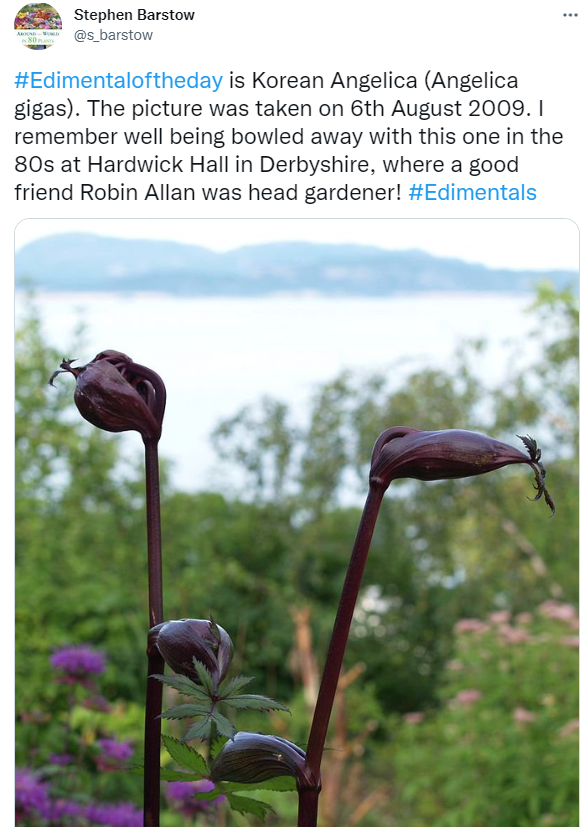
On the Korean wiki page, it simply states that “dangwi / dangquai’s petioles and tender stems are eaten raw or seasoned with herbs”. The root is also used medicinally along with Angelica acutiloba and Angelica sinensis.
You can find various instructional videos and recipes on Korean pages by searching
For example, the spring leaves and petioles are boiled and served with onions, garlic, sesame oil and sesame seeds.
As my plants were close to flowering (they darken quickly to deep red at this stage), I decided to go for using the flower stems in salad: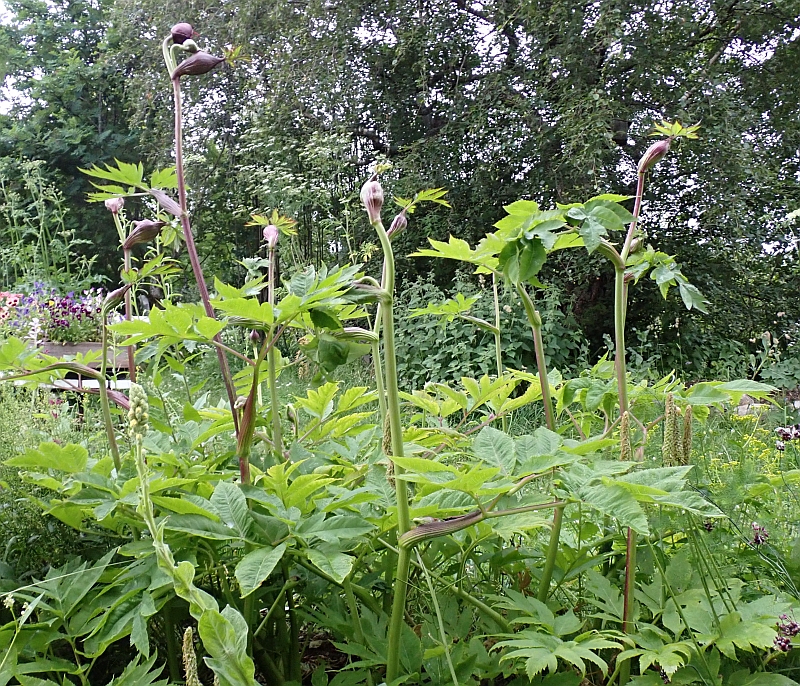 I first took one of the thicker flower stems…
I first took one of the thicker flower stems…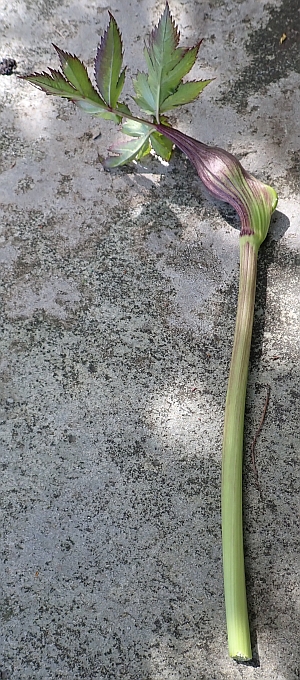 ….and sliced off a bit at the base for a taste! I was taken aback by how sweet it was (flower stems of Angelica archangelica were in the past considered to be candy by Norwegians). This reminded me of other plants that have surprisingly sweet flower stems: Scorzonera hispanica (scorzonera / scorsonnerot) and Arctium (burdock / borre). I assume that as plants like these approach flowering they produce less insect repellent chemicals and transfer their energy to producing flowers and seeds. For the salad, I peeled off the outer layer as it is fibrous and sliced it into the salad. Young seed pods of sea kale / strandkål were also available as were Scorzonera flower stems and buds.
….and sliced off a bit at the base for a taste! I was taken aback by how sweet it was (flower stems of Angelica archangelica were in the past considered to be candy by Norwegians). This reminded me of other plants that have surprisingly sweet flower stems: Scorzonera hispanica (scorzonera / scorsonnerot) and Arctium (burdock / borre). I assume that as plants like these approach flowering they produce less insect repellent chemicals and transfer their energy to producing flowers and seeds. For the salad, I peeled off the outer layer as it is fibrous and sliced it into the salad. Young seed pods of sea kale / strandkål were also available as were Scorzonera flower stems and buds.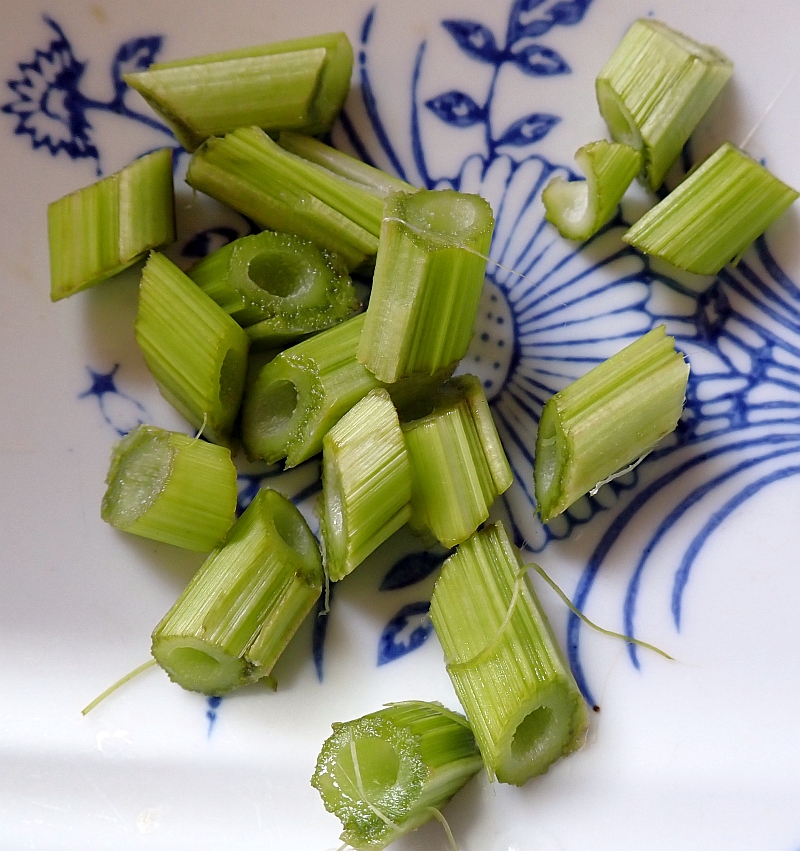

As with most Apiaceae, Angelica gigas is very popular with the pollinators, so this one definitely fits into the Edi-ento-mental category (delicious, ornamental and popular with the pollinators – what more could you wish of a plant!).
Unfortunately, like Angelica archangelica this species dies after flowering.
Cuckoo wasp in the garden!
I found the cuckoo wasp / rødgjøkveps in the garden today – Vespula austriaca. It parasitizes the red wasp / rødveps (Vespula rufa) by occupying its nest. V. rufa is uncommon in the garden, but I saw one today too. There are no workers of V. austriaca.
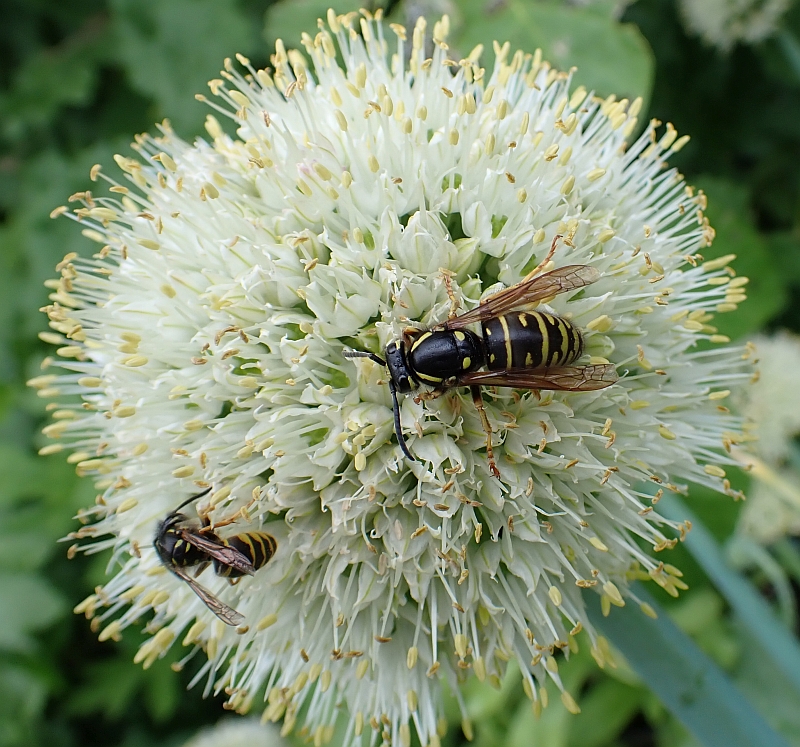


Window worm
A weird thing happened on the morning I left for England. Not what I expected to see gliding across the window in front of my desk: an earthworm. How on earth did it get there…and, yes, the window is dirty enough for it to get a grip!
Admiral on Urtica kiovensis
